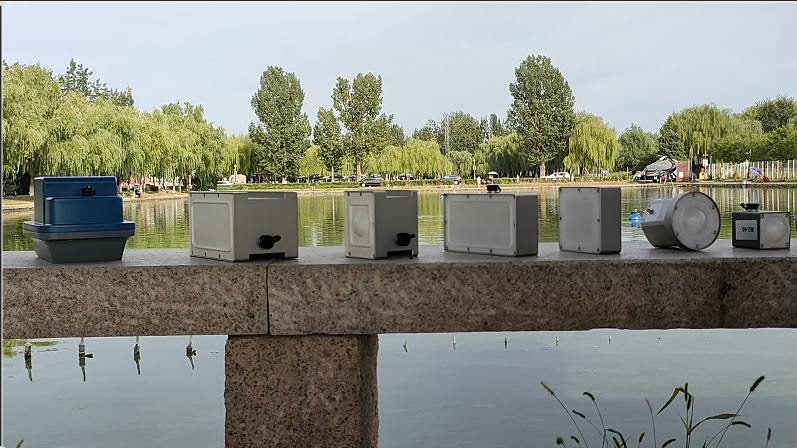1. Introduction: Challenges and Needs in Hydrological Monitoring in South Korea
South Korea’s topography is predominantly mountainous, with short rivers and fast flow rates. Influenced by the monsoon climate, concentrated heavy summer rainfall easily triggers flash floods. Traditional contact flow meters (e.g., impeller-type current meters) are easily damaged during floods, making data acquisition difficult and posing high risks to maintenance personnel. Furthermore, South Korea has stringent requirements for water resource management and water quality protection in major basins like the Han River and the Nakdong River. Consequently, there is an urgent need for a flow monitoring technology that enables all-weather, automated, high-precision, and safe operation. Hydrological radar flow meters have emerged as an ideal solution in this context.
2. Technical Advantages of Hydrological Radar Flow Meters
Hydrological radar flow meters, particularly systems using Surface Velocity Radar (SVR) combined with a water level gauge to calculate flow, derive their core advantage from non-contact measurement.
- Safety and Reliability: Equipment installed above bridges or riverbanks remains completely unaffected by floods, debris, or ice impact, ensuring equipment survival and data continuity during extreme weather.
- Easy Maintenance: No need for in-water operations significantly reduces maintenance costs and personnel risks.
- High Accuracy and Fast Response: Radar beams can accurately capture subtle changes in surface water velocity, with high data update frequencies (up to minute-level), providing critical support for real-time flood warnings.
- Multifunctional Integration: Modern radar flow meters are often integrated with water level radars, rain gauges, etc., forming comprehensive, all-in-one hydrological monitoring stations.
Flow calculation typically uses the ”Velocity-Area Method”: Flow = Average Surface Velocity × Cross-sectional Area × Coefficient. The radar measures the surface velocity, the water level sensor determines the cross-sectional area, and flow is calculated after calibration using an empirical coefficient.
3. Specific Application Cases in South Korea
Case 1: Urban Flood Warning System on the Han River in Seoul
- Background: The Han River flows through the densely populated and economically vital capital, Seoul. Ensuring the safety of riverside embankments during floods is paramount.
- Application: Radar flow monitoring stations were installed on several major bridges spanning the Han River (e.g., Mapo Bridge, Hangang Bridge). Radar sensors are aimed at the river surface below the bridge, continuously measuring surface velocity.
- Outcomes:
- Real-time Warning: When upstream heavy rain causes a sharp increase in velocity, the system immediately sends alerts to the Seoul Metropolitan Government and Disaster Prevention Center, buying crucial time for initiating emergency responses and evacuating residents in low-lying areas.
- Data Integration: Velocity data is integrated with discharge data from upstream reservoirs and rainfall data, building more accurate hydrological models and improving flood forecast precision.
- Safety Assurance: Eliminates the need for personnel to conduct dangerous manual measurements in rivers during flood seasons.
Case 2: Agricultural Water Resource Allocation in the Lower Nakdong River
- Background: The Nakdong River is South Korea’s longest river, and its lower basin is a key agricultural region. Precise water allocation is crucial for irrigation.
- Application: Radar flow meters were deployed near major irrigation intakes and diversion gates to monitor the real-time flow entering various irrigation channels.
- Outcomes:
- Precise Water Distribution: Water resource management agencies can use the accurate data from radar flow meters to remotely control gate openings, achieving demand-based water distribution and reducing waste.
- Dispute Resolution: Provides objective, unalterable flow data, effectively resolving water usage disputes between different regions or agricultural cooperatives.
- Long-term Planning: Accumulates long-term, continuous flow data, providing a scientific basis for water supply-demand analysis and long-term planning.
Case 3: Ecological Flow Monitoring in Mountainous Small Watersheds
- Background: South Korea emphasizes ecological protection, with laws requiring the maintenance of basic environmental flows to sustain aquatic ecosystem health.
- Application: Integrated radar flow monitoring stations powered by solar energy were installed in remote, mountainous small watersheds.
- Outcomes:
- Unmanned Monitoring: Leveraging the low power consumption of radar equipment and solar power enables long-term unmanned operation in areas without grid electricity.
- Ecological Assessment: Continuously monitored flow data assesses compliance with legal minimum environmental flow requirements, supporting decision-making for dam operation and water resource protection.
- Water and Soil Conservation Research: Provides valuable data for studying the impact of forest cover and land-use changes on watershed hydrology.
4. Challenges and Future Outlook
Despite significant success in South Korea, radar flow meters face some challenges:
- Accuracy Calibration: Measurement accuracy may require more complex algorithms for calibration in cases of irregular channel cross-sections or excessive surface debris.
- Cost: The initial investment for high-end radar flow meters is relatively high, though they offer advantages in total lifecycle cost (considering maintenance and safety).
Future trends for hydrological radar flow meters in South Korea will focus on:
- Integration with Artificial Intelligence (AI): Using AI image recognition to assist radar in judging flow conditions, identifying debris, and even automatically correcting measurement errors, further enhancing accuracy and intelligence.
- Internet of Things (IoT) Integration: Connecting all monitoring stations to a unified IoT platform for cloud-based data storage, analysis, and visualization, building “Smart River” systems.
- Multi-technology Sensor Fusion: Combining radar data with information from other technologies like video surveillance and drone surveys to create a comprehensive, multi-dimensional hydrological monitoring network.
5. Conclusion
Hydrological radar flow meters,凭借其卓越的技术特性(relying on their outstanding technical characteristics), perfectly meet South Korea’s high demands for safety, real-time capability, and automation in hydrological monitoring. Through successful practices in flood warning, water resource management, and ecological protection, this technology has become an indispensable part of South Korea’s modern hydrological infrastructure. As technology continues to advance, radar flow meters will undoubtedly play an even more critical role in ensuring South Korea’s water security and promoting sustainable water resource use. Their application experience also provides a valuable reference for other countries and regions facing similar challenges.
Complete set of servers and software wireless module, supports RS485 GPRS /4g/WIFI/LORA/LORAWAN
For more radar flow sensor information,
please contact Honde Technology Co., LTD.
Email: info@hondetech.com
Company website: www.hondetechco.com
Tel: +86-15210548582
Post time: Sep-28-2025


